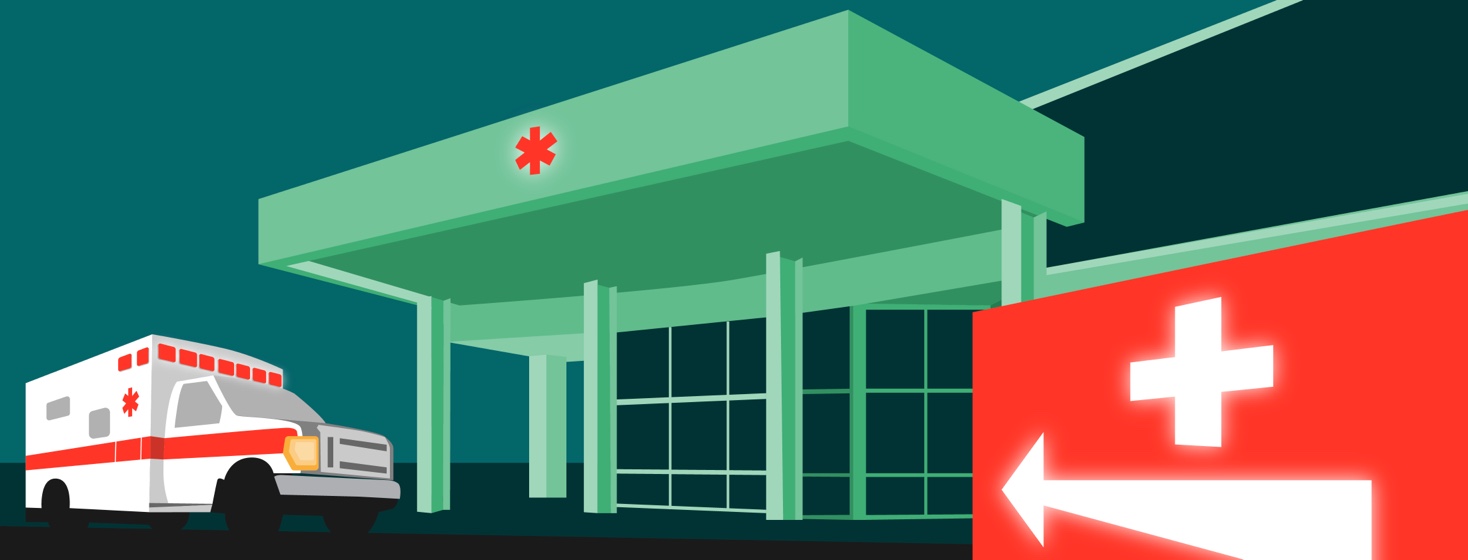Myasthenia Gravis in the Emergency Room
If your myasthenia gravis (MG) exacerbation is getting serious and you’ve decided to go to the emergency room, (See Part 1: "When to Go to the Emergency Room for Myasthenia Gravis") here are some things it might be helpful to know.
Call an ambulance
Most importantly, if you are having a lot of trouble breathing, it’s probably a good idea to call an ambulance. I’ve had several ambulance rides when my MG was flaring out of control.
I’ve also had friends drive me and then wish they had called an ambulance - driving a friend who is gasping for breath is a harrowing experience!
Pack the esstentials
Before leaving for the hospital, I always grab my BiPAP (bi-level positive airway pressure) machine, my crutches, and a knapsack I keep ready to go.
It contains essential toiletries including a toothbrush and toothpaste, deodorant, and lotion; a few changes of underwear; a neck pillow; a little desk fan; headphones; and a very long extension cable charger for my phone.
I also bring my Mestinon, and a sheet that lists my emergency contacts, diagnoses, medications, and neurologist’s name and number. If possible, I call or text my best friend to meet me at the ER to be my advocate.
Pulse oximetry
At the ER, an admission clerk asks why I’m there, takes my information, and assigns me to be triaged. The triage nurse takes my vital signs, puts a pulse oximeter on my finger to check how well I’m oxygenating my blood, and does further assessment to decide how serious of an emergency this is.
One very important point to note, and to make sure that first responders and ER staff are aware of: in MG, pulse oximetry is not a good measure of respiratory status.1
Emergency guidelines
I try to bring a copy of the Myasthenia Gravis Foundation of America’s Guidelines for Emergency Management of MG for First Responders with me, which states: "Rapid shallow breathing is seen in MG patients to compensate for weak respiratory muscles."1
The guidelines also state that: "Pulse oximetry is NOT a good indicator of respiratory strength in MG patients as abnormalities often develop only after life-threatening respiratory failure has already occurred. This is distinct from other causes of respiratory failure. Careful observation of respiration and bedside measurements (forced vital capacity, single breath count) are more reliable indicators of respiratory status than pulse oximetry in MG patients."1
This is because in MG the diaphragm and breathing muscles are too weak to pump air in and out of the lungs - the lungs themselves are fine. In other forms of respiratory failure, the lungs are compromised.2
Waiting for the doctor
If I get to the hospital before my breathing is failing - if I’m just severely weak - then I may have to wait a bit after initial triage to be seen. If this happens to you, and you start having more trouble breathing, let the ER staff know immediately.
Shortness of breath for someone with an MG exacerbation can turn into respiratory failure very quickly. In my worst flares, I have gone from speaking in full sentences to being unable to take a breath in the span of 15 minutes.
If my breathing is severely compromised, I’ll be taken back immediately, and put on either my own or the hospital’s BiPAP.
What to expect in the room
Once I’m in a room, I’ll get a saline IV, an oxygen sensor put on my finger, chest leads put on to monitor my heart, have blood tests drawn to check for infection and other abnormalities, and I’m often given a chest x-ray.
More than once I’ve gone in with an unexplained impending crisis, and discovered I had a silent pneumonia driving the exacerbation.
An ER doctor will see me and assess my weakness, and discuss my history with me. This is when it’s very helpful to have an advocate with me - someone who knows me well and knows my MG, and can explain things if I can’t speak. With COVID-19 rules, it may not be possible to have a friend in the room with me, but if I can, I always will.
At this point the ER doctor usually consults with the hospital neurologist, who may or may not come down to see me. When I go to the ER, I go knowing there’s a very high likelihood I’ll be admitted to the hospital for further treatment, and the neurologist may not even need to see me to make an admission plan.
Admission for me is usually to the ICU or the step-down unit, which I will talk about in Part 3: "When Admitted to the Hospital for Myasthenia Gravis".

Join the conversation